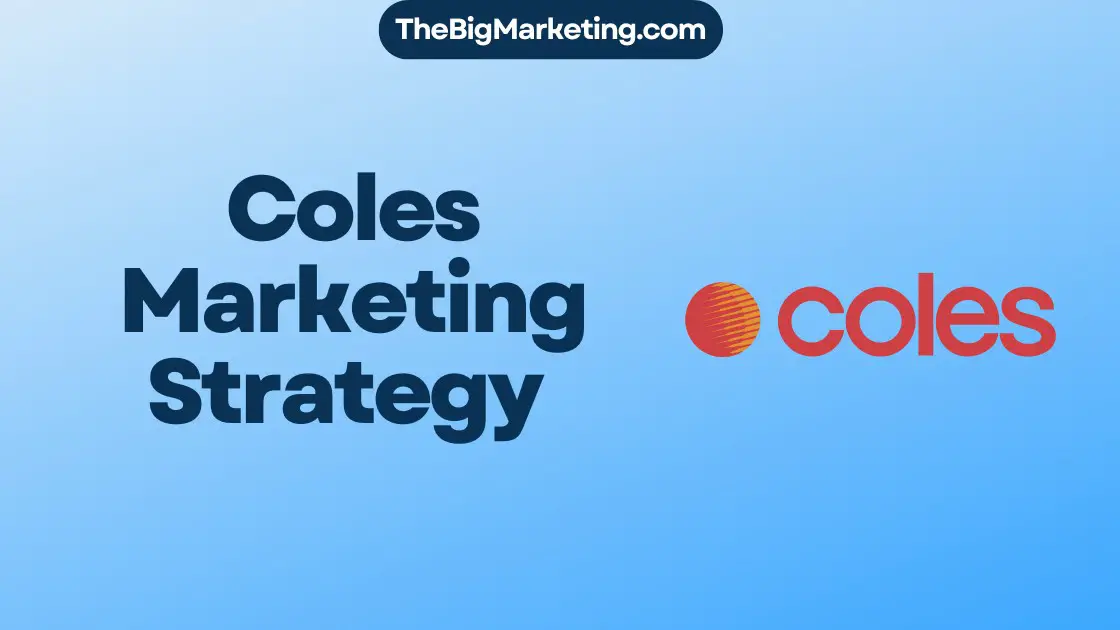Marketing is a complex discipline that encompasses various strategies and tactics. It involves driving profitable customer action and includes activities such as market research, brand positioning, and customer behavior analysis. Digital marketing has become a prominent aspect of marketing, with tactics such as targeting specific audiences and utilizing marketing analytics to measure the effectiveness of campaigns. Understanding the core of marketing is vital for developing successful marketing strategies.
Key Takeaways:
- Marketing involves driving profitable customer action through strategies and tactics.
- Market research, brand positioning, and customer behavior analysis are essential elements of marketing.
- Digital marketing plays a significant role in targeting audiences and measuring campaign effectiveness.
- Developing successful marketing strategies requires a deep understanding of the core concepts.
- Marketing is essential for driving business success and reaching target audiences.
Marketing is the act of driving profitable customer action. It involves a wide range of strategies and tactics used by organizations to position their products and services in the marketplace and motivate target audiences to make a purchase. It is a comprehensive discipline that encompasses various aspects of promoting and selling products.
What is Marketing?
Marketing is the act of driving profitable customer action. It involves a wide range of strategies and tactics used by organizations to position their products and services in the marketplace and motivate target audiences to make a purchase. Marketing is a comprehensive discipline that encompasses various aspects of promoting and selling products.
Effective marketing involves developing strategies to attract and engage customers, ultimately driving profitable customer action. To achieve this, marketers employ a combination of techniques such as market research, advertising, promotions, and customer relationship management. These strategies are designed to position products and services in a way that resonates with the target audience, highlighting their unique value and addressing their needs.
Marketing professionals utilize a range of tactics to reach and influence potential customers. This may include digital marketing techniques such as search engine optimization (SEO), social media marketing, email marketing, and content marketing. Traditional marketing methods, such as print advertisements, direct mail, and television commercials, are still effective in certain industries and target markets.
Marketing Strategies and Tactics
Marketing strategies are comprehensive plans that outline the goals and approaches a company will use to promote its products and services. These strategies take into account various factors such as the target audience, market conditions, and competitive landscape.
To execute marketing strategies effectively, organizations employ a diverse range of tactics. These tactics include:
- Creating compelling advertising campaigns that capture attention and communicate the unique selling points of products or services.
- Implementing promotions such as discounts, coupons, contests, or loyalty programs to incentivize customers.
- Utilizing social media platforms and online advertising to reach and engage with target audiences.
- Developing content marketing strategies that provide valuable information and insights to potential customers.
- Conducting market research to understand customer preferences and tailor marketing efforts to their needs.
By employing these strategies and tactics, organizations can effectively position their products and services in the market and motivate their target audiences to take profitable actions such as making a purchase, subscribing to a service, or recommending the brand to others.
Marketing is an essential function for businesses of all sizes and industries. It plays a critical role in driving revenue, building brand loyalty, and establishing a competitive advantage. With the right marketing strategies and tactics, organizations can effectively reach their target customers and achieve business success.
Understanding the Marketing Mix and the 4 P’s of Marketing
At the core of successful marketing strategies lies the concept of the marketing mix. The marketing mix consists of the four P’s: product, price, promotion, and place. These elements are fundamental in shaping a company’s marketing strategy and ensuring the effective promotion of their products or services.
Product
The product refers to what the company offers to its customers. This includes the tangible or intangible items, features, packaging, and servicing that make up the product. It is crucial for businesses to understand their target audience’s needs and preferences in order to develop and deliver products that meet those requirements.
Price
Price is a critical aspect of the marketing mix. It encompasses the market rate at which the product is sold, as well as any discounts, promotions, or pricing strategies employed by the company. Finding the right pricing strategy is essential to ensure profitability, competitiveness, and customer satisfaction.
Promotion
Promotion involves the channels and messages used by companies to communicate and promote their products or services to the target audience. It encompasses various marketing tactics such as advertising, public relations, sales promotions, and social media campaigns. Effective promotion strategies help create awareness, generate interest, and drive customer engagement.
Place
Place refers to the distribution channels and availability of the product. It involves the strategic placement of products in physical locations or online platforms to ensure customer accessibility. Selecting the right distribution channels and optimizing product availability are essential factors in reaching the target audience effectively.
Understanding the marketing mix and the four P’s of marketing is crucial for businesses to develop comprehensive and successful marketing strategies. By carefully considering and balancing these elements, companies can effectively position their products, set competitive prices, communicate value to their target audience, and ensure convenient product availability.
Here is a visually engaging table summarizing the four P’s of marketing:
| Product | Price | Promotion | Place |
|---|---|---|---|
| What the company offers | The market rate and discounts | Channels and messages for promotion | Distribution and availability |
10 Key Areas of Modern Marketing to Understand
Modern marketing encompasses various areas that are essential to understand in today’s digital world. By gaining expertise in these key areas, businesses can effectively navigate the ever-evolving landscape and reach their target audience with impactful campaigns.
1. Content Marketing
Content marketing involves creating valuable and relevant content to attract and engage a target audience. It focuses on building brand awareness, establishing thought leadership, and driving sales through compelling storytelling.
2. Email Marketing
Email marketing remains a highly effective channel for businesses to communicate with their customers. It allows for personalized messaging, delivering targeted offers, and nurturing customer relationships through regular updates.
3. Social Media Marketing
Social media marketing plays a crucial role in building brand awareness, engaging with customers, and driving website traffic. Platforms such as Facebook, Instagram, and LinkedIn offer opportunities to reach a wide and diverse audience.
4. Online Video Marketing
Online video marketing leverages platforms like YouTube to reach a broad audience and convey messages through engaging visuals. It allows businesses to showcase products, provide tutorials, and build brand personality.
5. Advertising and Pay-Per-Click (PPC)
Advertising, including pay-per-click (PPC), provides direct sales opportunities by targeting specific audiences based on their interests, demographics, and behaviors. Businesses can create targeted ads that appear on search engines, social media platforms, and other websites.
6. Search Engine Optimization (SEO)
Search engine optimization involves optimizing websites to rank higher in search engine results, driving organic traffic. It requires strategic keyword research, on-page optimization, and link building to increase visibility and attract qualified leads.
7. Public Relations (PR)
Public relations is responsible for managing the public image and reputation of a business. It involves building relationships with media outlets, managing crises, and creating positive narratives through press releases, media coverage, and events.
8. Influencer Marketing
Influencer marketing utilizes popular individuals, known as influencers, to promote products or services to their engaged audience. Working with influencers can help businesses expand their reach and establish credibility with their target market.
9. Marketing Strategy
Developing a comprehensive marketing strategy is crucial for businesses to define their target audience, set measurable goals, and align tactics across different channels. A well-defined marketing strategy ensures that resources are utilized effectively and drives desired actions from the audience.
10. Advertising
Advertising plays a pivotal role in reaching and influencing customers. It offers businesses the opportunity to create memorable experiences, evoke emotions, and drive purchase decisions through various mediums such as print, television, radio, and digital platforms.
Understanding these key areas of modern marketing is essential for businesses to stay competitive in today’s digital landscape. By leveraging the power of content marketing, email marketing, social media marketing, online video marketing, advertising, search engine optimization, public relations, influencer marketing, and developing a solid marketing strategy, businesses can effectively connect with their target audience, drive engagement, and achieve their marketing goals.
“`markdown
| Key Areas of Modern Marketing |
|---|
| 1. Content Marketing |
| 2. Email Marketing |
| 3. Social Media Marketing |
| 4. Online Video Marketing |
| 5. Advertising and Pay-Per-Click (PPC) |
| 6. Search Engine Optimization (SEO) |
| 7. Public Relations (PR) |
| 8. Influencer Marketing |
| 9. Marketing Strategy |
| 10. Advertising |
What is Marketing?
Marketing refers to the activities a company undertakes to promote the buying and selling of its products or services. It involves a wide range of activities, including advertising and promotions, aimed at reaching and engaging with target audiences. The primary goal of marketing is to drive sales and help businesses connect with their customers.
Whether it’s through traditional channels like print advertisements or modern digital platforms, marketing plays a crucial role in raising awareness about products and services. It creates demand and influences potential customers’ buying decisions.
Marketing covers a broad spectrum of strategies and tactics that businesses utilize to attract customers and increase revenue. It encompasses market research, competition analysis, pricing strategies, product positioning, advertising campaigns, and customer relationship management.
Marketing professionals employ various techniques to identify target audiences, understand their needs and preferences, and craft compelling messages to convince them to buy. They leverage advertising, promotions, and public relations to create brand awareness and generate interest in products or services.
Moreover, marketing is not limited to just selling tangible products. It also encompasses services, where businesses promote their expertise and specialized offerings to attract clients. Service marketing involves highlighting the value and benefits of intangible services and building trust with potential customers.
Overall, marketing is a fundamental aspect of business operations. It helps organizations communicate their value proposition effectively, generate leads, convert prospects into customers, and build long-term relationships. By understanding the importance of marketing and implementing effective strategies, businesses can thrive in a competitive marketplace.
| Marketing Activities | Definitions |
|---|---|
| Buying | The process of acquiring products or services by exchanging money or other valuable resources. |
| Selling | The act of persuading and influencing potential customers to purchase products or services. |
| Products | Tangible items or goods offered by businesses to meet customer needs and solve their problems. |
| Services | Intangible offerings provided by businesses to address specific customer needs or accomplish desired outcomes. |
| Advertising | The process of promoting products or services using various communication channels to reach target audiences. |
| Promotions | Marketing activities designed to create awareness, generate interest, and encourage immediate purchase or action. |
Marketing involves a comprehensive range of activities, including buying, selling, advertising, and promotions. These activities contribute to businesses’ success by attracting customers, driving sales, and increasing brand visibility. By employing effective marketing strategies, organizations can establish a strong market presence and gain a competitive edge in today’s dynamic business environment.
What Are the 4 P’s of Marketing?
The success of any marketing strategy relies on understanding and leveraging the key elements of the marketing mix, including the 4 P’s of marketing. These four pillars—product, price, place, and promotion—are fundamental to developing effective marketing strategies that drive business growth and fulfill customer needs.
Product:
The first P in the marketing mix represents the product itself. It refers to the goods or services that a company offers to its target market. This includes the features, functionality, and unique selling propositions that differentiate the product from competitors. By understanding the core attributes of their product, marketers can position it effectively and tailor their messaging to resonate with the target audience.
Price:
The second P denotes the price of the product. Price is a critical factor that influences consumer behavior and determines the perceived value of the offering. Marketers must consider various factors, such as production costs, market demand, competition, and profit margins, to price their products appropriately. Setting the right price helps strike a balance between ensuring profitability and attracting customers, driving sales and revenue.
Place:
The third P represents the distribution channels or place through which the product is made available to customers. It involves selecting the most suitable channel of distribution, which may range from physical stores, e-commerce platforms, direct sales, or a combination thereof. Understanding the target audience’s preferred shopping behaviors and optimizing the product’s presence in the right places is crucial to maximizing reach and accessibility.
Promotion:
The final P is promotion, which encompasses the methods used to communicate and promote the product to the target audience. This includes advertising, public relations, sales promotions, and other promotional activities that raise awareness, generate interest, and drive purchase intent. Marketers must carefully craft messaging and employ various communication channels to effectively reach and engage their target audience.
By considering the 4 P’s of marketing, marketers can develop comprehensive and strategic marketing plans that align with customer needs, drive sales, and generate long-term business success.
Traditional Marketing Strategies
In the era of digital marketing, it’s important not to overlook the power and effectiveness of traditional marketing strategies. These time-tested methods have been used for years to reach and engage with customers. Let’s explore some of the key traditional marketing strategies:
Outdoor Marketing
Outdoor marketing, such as billboards and bench ads, allows businesses to capture the attention of potential customers as they go about their daily lives. By strategically placing advertisements in high-traffic areas, companies can increase brand visibility and generate interest in their products or services.
Print Marketing
Print marketing materials, such as brochures and flyers, are tangible and provide a physical connection between the brand and the consumer. These materials can be distributed in targeted locations or handed out at events to effectively convey the company’s message, showcase products, and entice potential customers.
Direct Marketing
Direct marketing involves reaching out to individual customers through mailers, coupons, and other personalized promotional materials. This strategy enables businesses to deliver tailored messages directly to the target audience, fostering a more personal and direct connection.
Electronic Marketing
Electronic marketing, including TV and radio ads, continues to be a powerful tool in reaching a wide audience. By leveraging these mediums, companies can deliver their message to a large number of potential customers, enhancing brand awareness and driving engagement.
Event Marketing
Conferences, trade shows, and other events provide businesses with valuable opportunities to showcase their products and services in a targeted environment. Event marketing allows companies to interact face-to-face with potential customers, build relationships, and create memorable experiences that leave a lasting impression.
By incorporating traditional marketing strategies alongside digital efforts, companies can create comprehensive marketing campaigns that reach a diverse range of customers. While digital marketing has its advantages, traditional methods continue to be effective in reaching and engaging with audiences in meaningful ways.
Digital Marketing
Digital marketing has revolutionized the marketing industry, providing businesses with new and innovative ways to reach their target audience. By leveraging various strategies and tactics, companies can effectively communicate with customers and drive impactful results.
Search Engine Marketing
Search engine marketing (SEM) encompasses both paid advertising and search engine optimization (SEO). With SEM, businesses can increase their visibility on search engine result pages, targeting specific keywords and demographics to attract relevant traffic to their websites.
Email Marketing
Email marketing is a powerful tool for businesses to communicate directly with their audience. By delivering personalized and targeted messages, companies can nurture leads, promote products or services, and build strong relationships with customers.
Social Media Marketing
Social media marketing has become an integral part of any digital marketing strategy. Platforms such as Facebook, Instagram, and Twitter offer businesses the opportunity to engage with their audience, build brand awareness, and drive traffic to their websites.
Affiliate Marketing
Affiliate marketing is a performance-based marketing strategy where businesses collaborate with affiliates or influencers to promote their products or services. Affiliates receive a commission for each sale or lead generated through their referral, providing a cost-effective and results-driven approach.
Content Marketing
Content marketing focuses on creating and distributing valuable, relevant, and consistent content to attract and retain a clearly defined audience. Through blog posts, videos, infographics, and more, businesses can establish thought leadership, educate their audience, and drive conversions.
By incorporating digital marketing into their overall marketing strategy, businesses can gain valuable insights, optimize campaigns, and effectively connect with their target audience. Whether it’s through SEM, email marketing, social media marketing, affiliate marketing, or content marketing, digital marketing offers endless possibilities for growth and success.
Benefits of Marketing
Marketing offers numerous benefits to companies, playing a crucial role in their growth and success. Let’s explore some of the key advantages of implementing effective marketing strategies.
1. Audience Generation
One of the primary benefits of marketing is its ability to generate an audience. By targeting specific demographics and utilizing various marketing channels, companies can attract and engage their ideal customers. This audience generation lays the foundation for increased brand visibility, customer acquisition, and ultimately, business growth.
2. Inward Education
Marketing also serves as a means of inward education for companies. It allows organizations to gain a deeper understanding of their customers’ needs, preferences, and behaviors through market research and data analysis. This valuable insight helps companies refine their products, develop tailored solutions, and deliver exceptional customer experiences.
3. Outward Education
Through marketing efforts, companies can educate their target audience about the value and benefits of their products or services. It provides the opportunity to communicate key messages, unique selling propositions, and competitive advantages. By effectively conveying this information, marketing enables potential customers to make informed purchasing decisions.
4. Brand Creation
Building and differentiating a brand is another significant benefit of marketing. A well-executed marketing strategy helps establish a distinct identity for a company, creating a strong brand presence in the marketplace. This brand recognition leads to increased customer trust and loyalty, as well as a competitive advantage over rivals.
| Benefits of Marketing | Description |
|---|---|
| Audience Generation | Targeting specific demographics to attract and engage ideal customers. |
| Inward Education | Gaining a deeper understanding of customers’ needs and preferences. |
| Outward Education | Educating the target audience about a company’s products or services. |
| Brand Creation | Establishing a distinct identity, building trust, and gaining a competitive advantage. |
Conclusion
Understanding the core of marketing is crucial in developing effective marketing strategies that drive business success. By considering the integral components of a comprehensive marketing strategy, such as the marketing mix, modern marketing areas, and the 4 P’s of marketing, companies can effectively reach their target audience, drive sales, and build a strong brand presence.
The importance of marketing cannot be overstated. It plays a critical role in promoting products and services and establishing a connection with customers. Through digital marketing strategies, companies can leverage various channels and techniques to connect with their audience, measure campaign effectiveness, and ultimately achieve their marketing goals.
To stay competitive in today’s digital landscape, it is essential for companies to adopt effective marketing strategies. By understanding the core principles of marketing and employing the right tactics, businesses can enhance their brand visibility, engage with their target audience, and drive sustainable growth.



